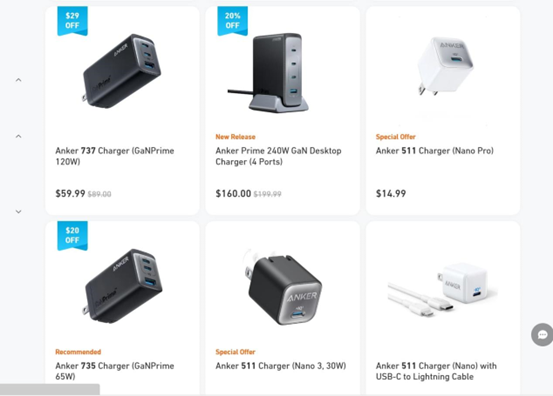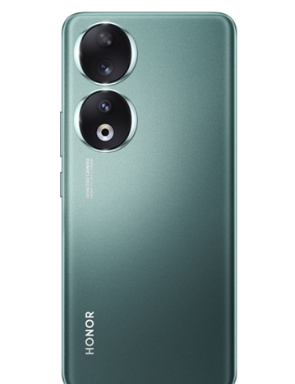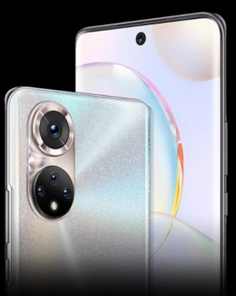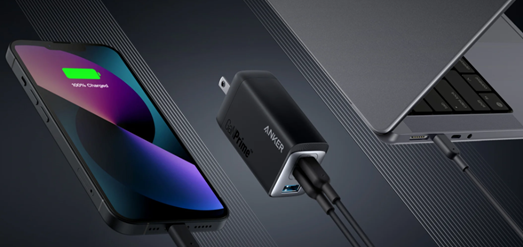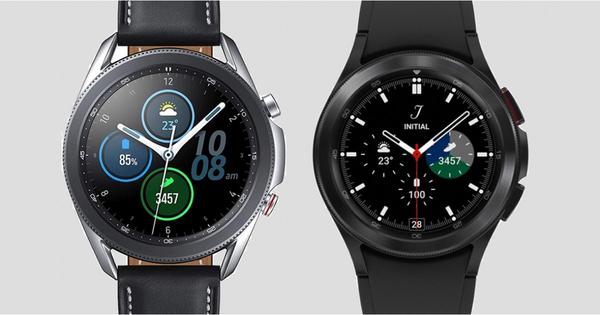
By cuterose
Samsung Galaxy Watch 4 v Watch 3: the big differences revealed
The Samsung Galaxy Watch 4 and Galaxy Watch 3 might share names, but these mark two very different times for Samsung smartwatches.
While the Watch 3 ran Samsung's own Tizen OS, the Galaxy Watch 4 has switched to Wear OS 3 – so there's a totally different OS running the show. That means totally new apps, contactless payment options, voice assistant choices and different performance.
The Watch 3 is still available for now, but won't be upgraded to run Google's Wear. However, it will still be supported on the software front for a few more years.
So if you were in the market for a Samsung smartwatch and wondering if you should pick up a Watch 3 on the cheap or just go for the Watch 4, we've worked out the key differences to help you decide what you're actually going to lose out on and gain depending on where you spend your money.
Here's our breakdown of how the Samsung Galaxy Watch 4 compares to the Galaxy Watch 3.
Samsung Galaxy Watch 4 v Watch 3: Design and screen
Samsung Galaxy Watch 3 (left) and Watch 4 Classic (right)
There's a lot to get into here and we'll start with the size and model options first.
With the Galaxy Watch 4, you're getting the option of 40mm and 44mm case sizes. You also have the Watch 4 Classic, which most closely resembles the Watch 3, and that comes in 42mm and 46mm cases. The Watch 3 in comparison comes in two sizes and that's 41mm and 45mm, so basically sits in between the sizes of the two Galaxy Watch 4 models.
In terms of case materials, the Watch 4 is available with an aluminium one and the Watch 4 Classic with a stainless steel case. The Watch 3 also comes with a stainless steel case, but you can also spend more and pick it up with a lighter titanium case too. We wouldn't at all be surprised if somewhere down the line Samsung gave the Watch 4 the titanium treatment as well.
Samsung says the Watch 4 and Classic is slimmer and lighter than the Watch 3, and from our close up comparison with the Classic and Watch 3, we'd say there's not a huge amount in it. They do soak up similar space on your wrist. It's a different story with the Galaxy Watch 4, which is essentially the replacement for the Watch Active and offers a sleeker, more minimalist look.
Samsung Galaxy Watch 3 (left) and Watch 4 Classic (right)
When it comes to straps, you'll firstly have an array of different options to choose from including leather and silicone options and have your pick of first party and third party apps to connect to those watch cases.
Size-wise, the Watch 3 41mm uses 20mmm bands and the 45mm uses larger 22mm bands. With the Watch 4 coming in four different sizes, it's a similar story with strap sizes for the larger and smaller Watch 4 models. Crucially, you still have that simple pin mechanism around the back to make it easier to swap them out.
In the screen department, Samsung uses what its calls its 'Super AMOLED' displays, and its displays are some of the brightest, colorful most vibrant you can find on a smartwatch.
The new Watch 4 offers a bump in resolution, but offers similar screen sizes found on the Watch 3.
The Watch 4 gives you the option of a 1.4-inch, 450 x 450 resolution AMOLED screen or a 1.2-inch 396 x 396 one. The Watch 4 Classic 46mm model has a 1.4-inch 450 x 450 screen like the largest Watch 4 option. T
he smaller 42mm Classic has a 1.19-inch 396x 396 screen. Flipping over to the Watch 3, and you're getting a 1.4-inch 360 x 360 resolution AMOLED display on the 45mm model and a 1.2-inch, 360 x 360 one on the 41mm Watch 3.
Ultimately, you're getting similar screen sizes here, with a jump in resolution and pixels on the Watch 4. That being said, the Watch 3's displays still hold up well against the competition and we still think you'll get a good screen experience from the older Samsung smartwatch. We should also add, that all watches here offer an always-on display mode if you want the screen on 24/7.
All of these watches offer two physical buttons though on the new Watch 4, they are a flatter-style button compared to the more traditional watch button look that you get on the Watch 3. That's down to new health monitoring features Samsung has added, which we'll get into further down below. There's rotating bezels here too, and the Watch 3 and Watch 4 Classic both offer the physical kind. Though Samsung has ditched the bezel-friendly app tray for the Watch 4, which you do get on the Watch 3. The standard Watch 4 features a digital bezel like the Galaxy Watch Active 2.
For water resistance, you're getting a 5ATM rating across the board here. That means the Watch 4 and Watch 3 are both safe for swimming up to 50 metres depth. They all support the ability to track pool swimming and open water swimming too.
Samsung Galaxy Watch 4 v Watch 3: OS and smartwatch features
Samsung Galaxy Watch 3 (left) and Watch 4 Classic (right)
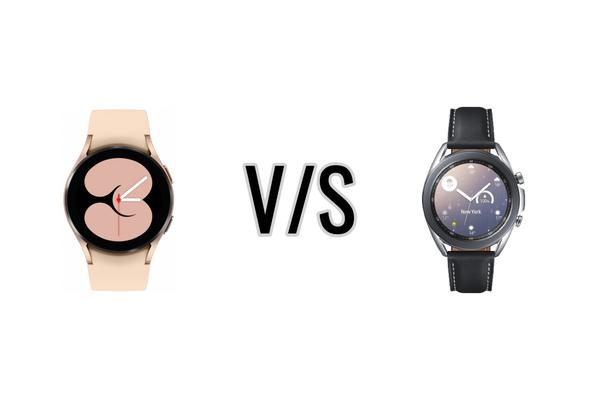
When it comes to features we have to talk about smartwatch operating systems first. The Watch 3 runs on Samsung's Tizen OS while all Watch 4 models run on Google's Wear OS with Samsung's One UI Watch overlaid on top.
Crucially here, the Watch 3 works with Android and iOS devices and it seems will continue to do so. The Samsung Galaxy Watch 4 only works with Android phones and that's a big deal here.
Samsung will not be upgrading the Watch 3 to Wear OS, but will support Tizen for a at least 3 years it seems. Wear is the future and that's where Samsung it seems will concentrate its efforts.
In terms of what this means for smartwatch features, the Watch 3 and Watch 4 share some core features. You'll be able to view notifications and respond to notifications. You'll have music controls and a music player though the newer Samsung's offer 16GB of storage compared to 8GB on the Watch 3. There's LTE support across the board, Bixby access and the ability to download apps.
The Watch 4 though will have access to Google's Play Store and the Watch 3 will be stuck with access to the Samsung Galaxy Store to still get your hands on apps like Spotify. The newer Samsung smartwatch will also have Google apps pre-loaded like Google Maps and YouTube Music. It will also offer the option to choose between Samsung and Google payment systems and smart assistants too.
If iPhone compatibility matters, then you'll need to go for the Watch 3. If greater app support and future software support is important here, then it's the Watch 4 you want on your wrist.
Samsung Galaxy Watch 4 v Watch 3: Health and fitness features
Samsung Galaxy Watch 3 (left) and Watch 4 Classic (right)
The good news here is that whether you go for the Watch 3 or the Watch 4, you're getting some pretty extensive features to track your health and fitness. Unsurprisingly, going for the new Watch 4 will get you access to some new things here, but that's not to say you're getting shortchanged with the Watch 3 at all.
On the sensor front, you're getting the same motion sensors to track movement and the same GPS and satellite support to track outdoor exercise like runs, cycling and open water swims. The Watch 3 features an optical heart rate monitor and also hosts an ECG sensor to offer more accurate heart rate readings. It also uses that optical sensor setup to let users take blood oxygen readings and blood pressure readings once they've calibrated it with a cuff-style monitor first.
The Watch 4 offers all of those same features, but also introduces its new BioActive sensor, which adds in a BIA sensor (Bioelectrical Impedance Analysis), which can be used for a new body composition analysis tied to keeping track of you weight and metrics like skeletal muscle and body water.
As a fitness tracker, you're getting a lot of the same features in terms of what you can track with screens on the Watch 4 looking a little different down to that Wear and new Samsung UI influence. There's some improvements on the sleep tracking front for the Watch 4 with snoring detection and the ability to measure blood oxygen levels during the night, which you can't currently do on the Watch 3.
Our glance at the sports tracking features seem to indicate that things are going to feel very similar across both watches. You're getting largely the same exercise modes supported with big running features like an audio-based running coach and advanced running metrics supported on both watches.
Samsung says the Watch 4 will offer more automatic activity recognition support, but we don't think that's a hugely desirable feature outside of picking up when you're going for a walk as accuracy struggles in comparison to manual tracking.
You also have to factor in apps here because the Watch 4 should benefit from some rebuilt third party apps from the likes of Strava and Adidas running, which should improve the tracking experience here too.
We'd say they offer a strong mix of health and fitness features, though you're clearly getting a bit more in the way of health tracking if you go for the Watch 4.
Samsung Galaxy Watch 4 v Watch 3: Battery life
If you care about battery life, then we'd say be prepared to experience a similar performance based on our testing with the Watch 3 and the numbers being mentioned by Samsung with regards to what battery you can expect from the Watch 4.
We'll start with the Watch 3, which packs a 247mAh capacity battery for the 41mm model and 330mAh one for the 45mm version. Samsung says those batteries should deliver over 43 hours in typical use or 120 hours in low usage. Based on our testing with the larger Watch 3, we managed on average 1.5 days and a maximum of 2 days.
On the Watch 4, there's a 361mAh battery packed into the 44mm and 46mm models and a smaller 247mAh one reserved for the 40mm and 42mm watches. Samsung says you can expect up to 40 hours of battery life and can add 10 hours of charge from a 30 minute charge. Ultimately though, it seems in full smartwatch mode we can expect a similar kind of battery performance from the Watch 4, which is a bit disappointing.
Samsung Galaxy Watch 4 v Watch 3: Initial verdict
So how does the Samsung Galaxy Watch 4 and the Samsung Galaxy Watch 3 match up?
From a design perspective, you're obviously getting more size options with the Watch 4 and benefiting from improved screens. The Galaxy Watch 4 Classic doesn't feel hugely different from the Watch 3 in look, though the physical rotating bezel seems to dominate more on the newer Samsung smartwatch. We still think the screens on the Watch 3 hold up well too.
Features-wise, the Watch 4 is giving you that additional body composition analysis feature over the Watch 3 and it is running on Wear, which opens up the type of apps you have at your disposal. The Watch 3 though does still work with iPhones, though you've got an operating system that will be good for maybe 2-3 years before it starts to feel really old. By then you might want a different smartwatch anyway.
You can't really separate them based on battery numbers and while the Watch 4 has a newer Exynos processor, we can't say we found the Watch 3 particularly sluggish in the performance department.
If you go for the Watch 3, you're still getting a good looking watch that's still feature packed and its hardware doesn't feel dated.
But you will most notably miss out on the new Wear experience.
The Watch 4 gives you the best Samsung has to offer with multiple sizes and the Wear operating system that Samsung has helped to build and will look to improve and enhance with Tizen eventually left behind





